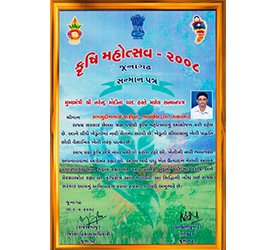Mango Farming
Plantation and Cultivation
1
Climate
Mango can be grown under both tropical and sub-tropical climate from sea level to 1400 m altitude, provided there is no high humidity, rain or frost during the flowering period. The mango is naturally adapted to tropical lowlands between 25°N and 25°S of the Equator and up to elevations of 3,000 ft (915 m).
Places with good rainfall and dry summer are ideal for mango cultivation. It is grown as a dooryard tree at slightly cooler altitudes but is apt to suffer cold damage. The best climate for mango has rainfall of 30 to 100 in (75-250 cm) in the four summer months (April to July) followed by 8 months of dry season. It is better to avoid areas with winds and cyclones which may cause flower and fruit shedding and breaking of branches.
Places with good rainfall and dry summer are ideal for mango cultivation. It is grown as a dooryard tree at slightly cooler altitudes but is apt to suffer cold damage. The best climate for mango has rainfall of 30 to 100 in (75-250 cm) in the four summer months (April to July) followed by 8 months of dry season. It is better to avoid areas with winds and cyclones which may cause flower and fruit shedding and breaking of branches.
2
Harvesting
Mangos normally reach maturity in 4 to 5 months from flowering. Fruits of "smudged" trees ripen several months before those of untreated trees. The fruits will be larger and heavier even though harvested 2 weeks before untreated fruits.
3
Culture
About 6 weeks before transplanting either a seedling or a grafted tree, the taproot should be cut back to about 12 in (30 cm). Inasmuch as mango trees vary in lateral dimensions, spacing depends on the habit of the cultivar and the type of soil, and may vary from 34 to 60 ft (10.5-18 m) between trees. Closer planting will ultimately reduce the crop. The young trees should be placed in prepared and enriched holes at least 2 ft (60 cm) deep and wide, and 3/4 of the top should be cut off.
4
Blooming and Pollination
Mango trees less than 10 years old may flower and fruit regularly every year. Thereafter, most mangos tend toward alternate, or biennial, bearing. In most of India, flowering occurs in December and January; in northern India, in January and February or as late as March. Mango flowers are visited by fruit bats, flies, wasps, wild bees, butterflies, moths, beetles, ants and various bugs seeking the nectar and some transfer the pollen but a certain amount of self-pollination also occurs.
5
Propagation
Mango trees grow readily from seed. Germination rate and vigor of seedlings are highest when seeds are taken from fruits that are fully ripe, not still firm. Seeds of polyembryonic mangos are most convenient for local and international distribution of desirable varieties. However, in order to reproduce and share the superior monoembryonic selections, vegetative propagation is necessary. Inarching and approach- grafting are traditional in India. Tongue-, saddle-, and root-grafting (stooling) are also common Indian practices.
6
Dwarfing
Reduction in the size of mango trees would be a most desirable goal for the commercial and private planter. In India, double-grafting has been found to dwarf mango trees and induce early fruiting.
7
Soil
The mango tree is not too particular as to soil type, providing it has good drainage. Rich, deep loam certainly contributes to maximum growth, but if the soil is too rich and moist and too well fertilized, the tree will respond vegetative but will be deficient in flowering and fruiting. The mango performs very well in sand, gravel, and even oolitic limestone.







